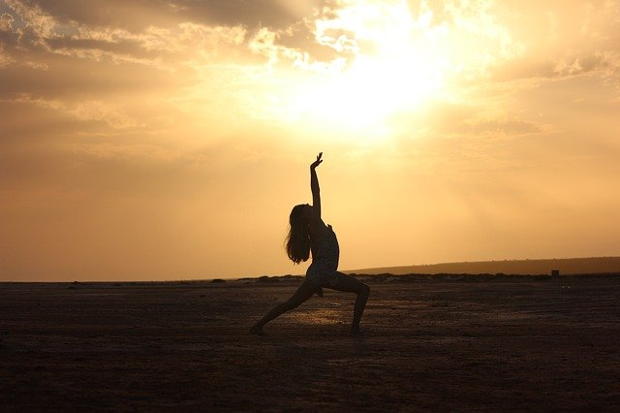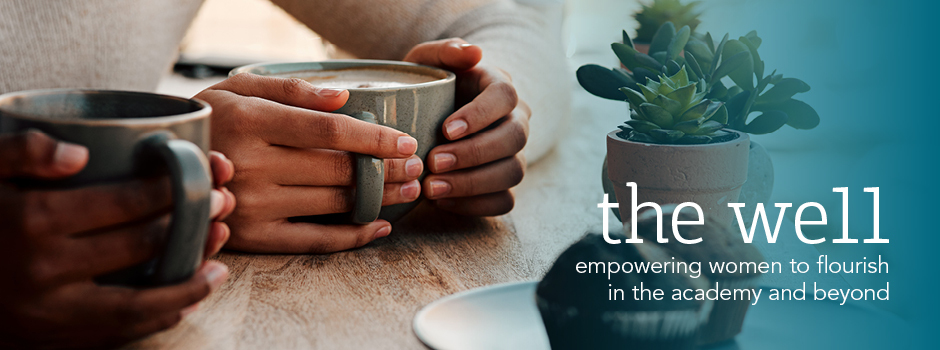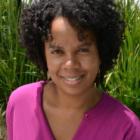Kaya Prasad: So often, dance is left out of the discussion about theology and arts. Can you tell me about your journey of hearing and responding to God’s call to lend your voice toward filling in that gap?
Marlita Hill: I started dancing when I was fifteen with a dance ministry, and I was not interested at all in dance. I actually wanted to be a psychologist. There was an organization called B.O.S.S., Building On Spiritual Substance, and they taught youth about entrepreneurship based on biblical principles. They would have events up at their resort in the mountains, and I would go with my trainers up there. There was this one particular day where I went — I was volunteering — and I heard this voice say, "Go watch." And that is the first time I can ever recall hearing God speak to me. I was like, "Mm, I don't want to" (laughs). My grandmother and my family had always taken us to cultural events, so I knew about dance, I knew about culture. It was cool to go with my family, but it wasn't something that had gripped me.
The voice pressed again and again, and finally I relented, and I went, and I watched. It was this dance ministry called The Hush Company that was led by Stacy and LaQuin Meadows. They began to dance, and it was like an elephant sat on my chest (laughs). I sat there, I felt like I was glued to my seat, and then tears poured down my eyes as I watched them dance, and one of the mentors, she saw God dealing with me, so afterwards she asked me if I wanted to meet them. I said yes, so she took me upstairs, I prayed with them, and then I was at rehearsal on Tuesday (laughs). Thus began my life with dance! I ministered with them for eight years, travelled all over the country, and as I travelled with them, I started seeing that what I had experienced on that mountain was happening to other people.
KP: When you talk about your writing process, it seems the words just come as an inspiration in the moment. Do you think that you can, in retrospect, trace why those things have become important to you over time?
MH: The Lord reached out to me and said, "This is what I have for you to do," and then I followed, which is what he does to each and every one of us. Everything that I've done has been because of that voice. Now of course, he gives me freedom to make my own choices, but the choices I make are in line with what he’s shown me my life is about.
KP: Could you share about a specific instance of feeling a clear call in a particular direction but also struggled with the element of free choice?
MH: Not that I can recall. The thing that I struggled with more was knowing what God told me but seeing circumstances not bear out (laughs). He told me to go to school for dance. That's why I pursued school for dance, but it took me almost nine years before a school would accept me. There was a lot of disappointment, a lot of heartache; by the time I finally got accepted I didn't even think I could dance (laughs). It took a long time to be confident about who I am as an artist because there was — and even still, is not necessarily anything sexy on my resumé. I studied with some amazing teachers at wonderful schools, but they weren't your Juilliard, your Harvard...but it made me tough, and it freed me to create my own path.
KP: How did you forge your own path in getting into a dance school and getting the training you needed?
MH: When I was at Towson University in Baltimore, I was noticeably behind everyone else technically because I started learning ballet and modern late, and those are the focal art forms in universities. Even though I was traveling and getting paid to dance since I was fifteen, that was not considered training, so I never got into any of the company auditions.
Then I remember (laughs) okay, funny story. [I was on a plane back to Baltimore after a breakup, and I heard this song.] It's called "Leaf Dream," by John Boswell, and it's a solo piano piece. And I wept...and I saw tap dancing to it. When I got back to Baltimore, I just went into the studio. I'd be in there at midnight, one o'clock in the morning, creating a work to this song. I've always looked for opportunities, and there was this artist showcase that was happening in Baltimore. I was like, "Well, I created this. I'll just apply. Who knows?" And I got in! I didn't know how prestigious it was. One of my faculty members, she came to me and said, "Honey, faculty have tried to get into that and haven't got in." And I did it.
So that gave me the impetus to start creating work on my own, and then my trajectory in college completely changed. Now I was the one creating dances that people wanted to be in, so that continued to open doors for me. Those are the ways that I started to carve out a way for myself. I had this training that I was gaining in ballet and modern, but I had this whole other life in the Hush Company and this whole other way of moving, and combining those two gave me my own little flavor that I used.
KP: It seems like it was learning to listen to God that enabled you to forge your own path.
MH: I'm telling you...if you learn how to do that one thing, it will take you incredible places.
KP: Could you share some more about where the ministry is in your dance experience?
MH: As a teacher it is speaking life into my students. It’s helping them become better dancers, helping them do what God has put in their heart to do. It’s being there for them and even calling them to the carpet when I need to.
As a choreographer, it's about speaking life to my dancers, helping them get to where God is leading them to. I pray, "Lord, what is it that they're supposed to get from working with me [other] than just the dance?" As a leader in those roles it's incumbent upon me to ask, "What are they here for?" and for me to pray, "How do I serve them?" That's something that I had to learn how to do because I didn't want to waste time, so I was so quick to get to, "Let's hurry up and get to the dance."
KP: In what ways has your work shaped your own faith?
MH: One thing that the Lord taught me is that there is one body, the body of Christ, but there are different assignments and different contexts in that body. That has afforded me so much freedom in my relationship with God and in my work. I understand that there is no one way a Christian’s art life is supposed to look. One artist’s work may look one way and they are working in the context they should be in, but another artist’s work may look completely different. Regardless, it's the same God directing them both. My work now is all about helping other artists of faith find and feel comfortable in that freedom by tackling how we see ourselves as artists in God, how we see God toward us as artists, and how we see God towards our art careers in secular culture.
KP: Most of your writing seems geared towards practicing artists, or aspiring artists, but do you have any advice for someone who might not consider themselves an artist but who wants to engage with art as a way of cultivating their relationship with God?
MH: One of the things that I teach is that art is for our life, not just for our Christian service. One way the Lord has showed me this is through the way we spend time together in my creative practice, like a man and his son who spend time together by going to the lake to fish. Just like that, us and God in our creative endeavors is a place for us to come and to be together.
KP: That's great. Thank you so much for talking with me this morning. I’m so excited to share all your insights!
This interview transcript was edited for length and clarity. If you’d like to read more of what Marlita Hill has to say about dance, art, and teaching, you can read the full interview.
Photo by Kirsi Kataniemi from Pixabay.





